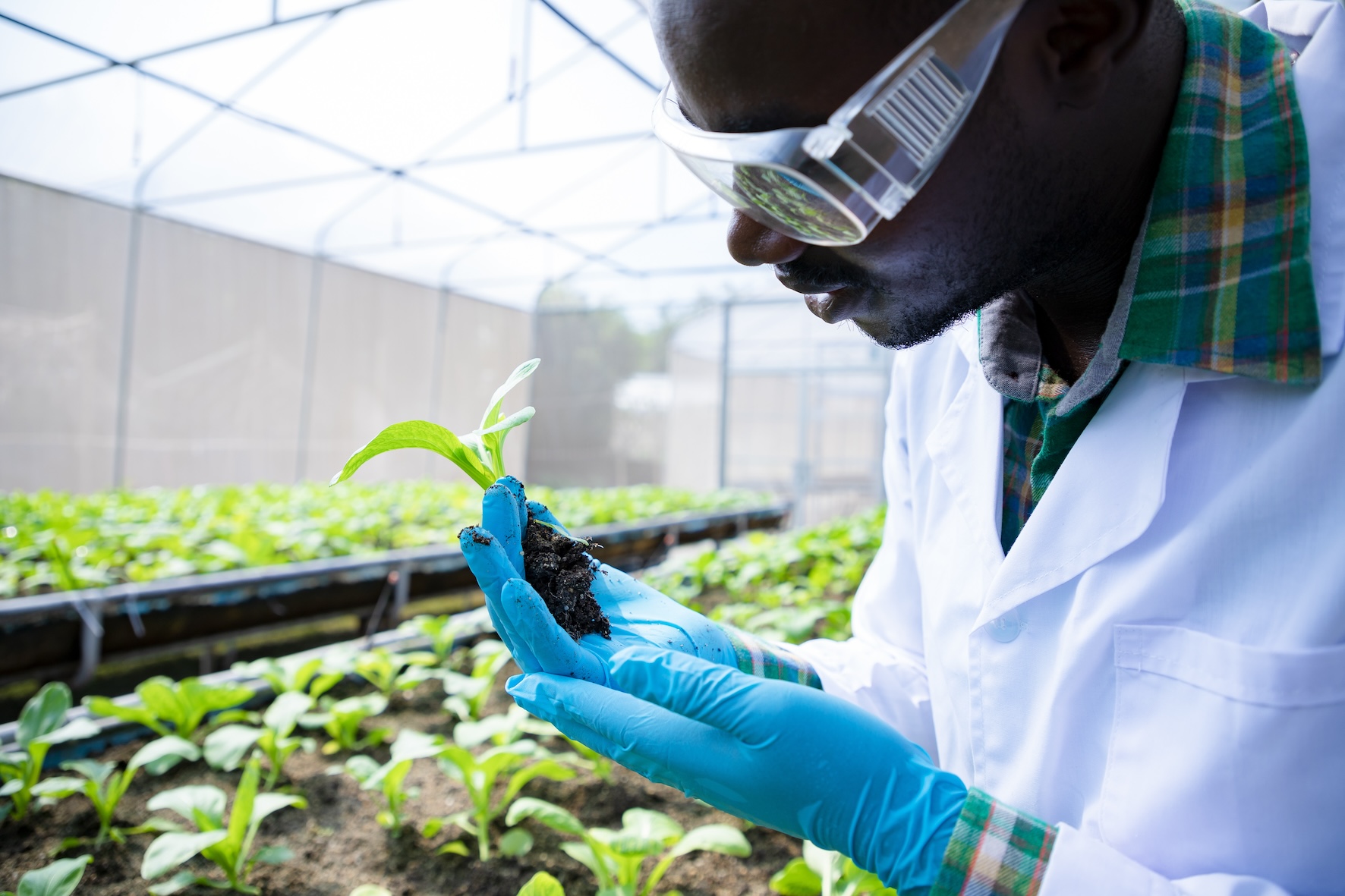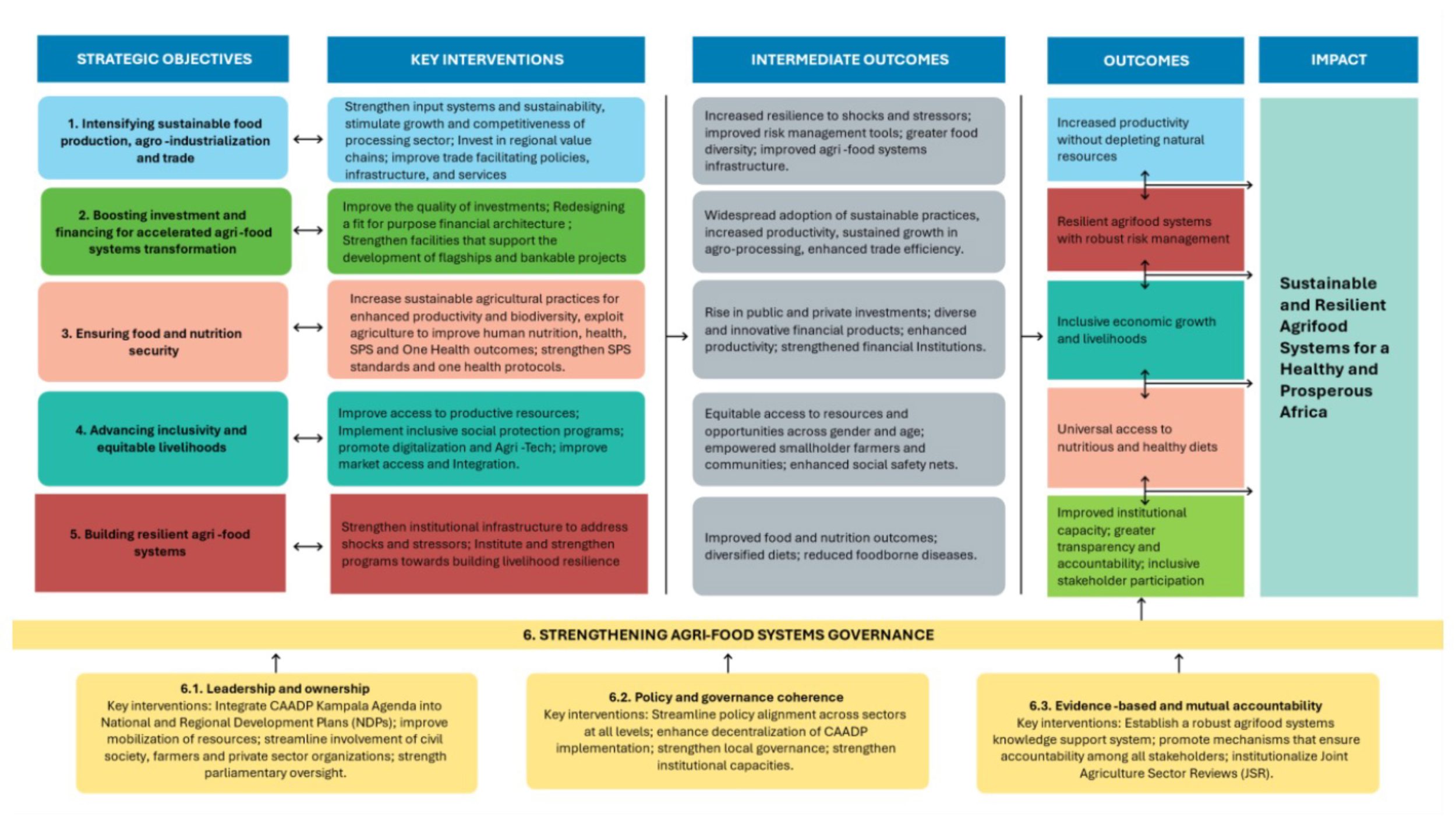Climate Resilience: A Defining Priority for COP30
Climate resilience. We expect this to be a major topic at COP30. Resilience has many…

Summary
The African Union Extraordinary Summit on the Post-Malabo Comprehensive Africa Agriculture Development Programme (CAADP) was held in Kampala, Uganda on January 9-11. The summit adopted the 10-year CAADP Strategy and Action Plan, and the Kampala CAADP Declaration on Building Resilient and Sustainable Agrifood Systems in Africa, which will be implemented from 2026 to 2035.
The 10-year CAADP Strategy and Action Plan aims to increase the continents agrifood output by 45% by 2035 and transform its agri-food systems as part of its new plan to become food secure in a decade. Six strategic objectives have been developed to help realize this ambition.
The Kampala Declaration set forth six commitments that will transform and strengthen the agri-food system on the continent. The commitments closely align with the strategic objectives developed to help realize the CAAPD Strategy and Action Plan. The declaration builds upon the commitments made under the 2003 Maputo Declaration and the 2014 Malabo Declaration. It introduces a fresh agenda that emphasizes sustainable practices, agroecology, regional integration, and women and youth empowerment.
CAADP Strategy and Action Plan 2026-2035
The Comprehensive African Agricultural Development Programme (CAADP) envisions “Sustainable and Resilient Agri-food Systems for a Healthy and Prosperous Africa,” aligning with the African Union’s Agenda 2063 and the Africa Common Position on Food Systems. The 2026-2035 Strategy represents a paradigm shift from agriculture-led growth to a comprehensive agri-food systems approach, emphasizing the interconnection between agriculture, nutrition, and economic development. This integrated strategy is designed to address complex trade-offs and foster sustainable practices from production to consumption while ensuring resilience, inclusivity, and governance improvements.
The CAADP Strategy identifies six strategic objectives targeting intensified food production, agro-industrialization, trade, investment mobilization, food security, equitable livelihoods, resilience, and governance. Its ambitious goals include a 45% increase in agrifood output, halving extreme poverty, reducing post-harvest loss by 50%, tripling intra-African trade, and achieving zero hunger by 2035. Achieving these goals requires mobilizing $100 billion in investment, allocating at least 10% of public expenditure to agrifood systems, and empowering women, youth, and marginalized groups.
The Strategy and Action Plan calls for coordinated efforts, increased investments, and the adoption of innovative practices to achieve sustainable, resilient, and inclusive agri-food systems transformation. The strategy and action plan’s six strategic objectives include, and elaborate list of interventions and key action areas identified under each intervention. The graphic below (CAADP pathway to change) provides a high-level snapshot of the strategic objectives and key interventions and the expected outcomes and impacts on agri-food systems.

CAADP Strategy and Action Plan 2026-2035
The Kampala CAADP Declaration
The commitments in numbers:
The six commitments:
1️⃣ Commitment to Intensify Sustainable Food Production, Agro-Industrialization, and Trade aims to increase agrifood output by 45% by 2035 through sustainable agricultural practices to meet Africa’s growing food needs and global trade opportunities, reducing post-harvest loss by 50%, tripling intra-African trade in agrifood products, and raising the share of locally processed food to 35% of agrifood GDP.
Actions: strengthen input systems like seeds, soil health, and water management; foster emerging technologies such as AI and precision agriculture; support agro-industrial SMEs; integrate smallholder farmers, women, and youth into value chains; enhance market access by removing trade barriers and improving infrastructure; and invest in regional value chains and post-harvest systems to boost food security and sustainability across Africa.
2️⃣ Commitment to Boost Investment and Financing for Accelerated Agrifood Systems Transformation – $100 billion in public and private investment in African agrifood systems will be mobilized by 2035, allocating at least 10% of annual public expenditure and reinvesting 15% of agrifood GDP annually into the sector.
Actions: increase investment from both public and private sectors to drive sustainable growth, expand public sector funding for critical infrastructure, enhance capacities to develop impactful programs and projects, and improve access to financing for agrifood transformation, ensuring climate finance reaches farmers and small-scale food producers and processors.
3️⃣ Commitment to Ensure Food and Nutrition Security achieving zero hunger in Africa by 2035, reducing stunting, wasting, and overweight by 25%, and ensuring 60% of the population can afford a healthy diet.
Actions: promote agrifood systems that enhance nutrition and health, boost the production and consumption of nutritious traditional and indigenous foods, strengthen nutrition policies and education, and enhance food safety through sanitary standards and One Health protocols. Investments will focus on disease surveillance, vaccine production, improved livestock feed, sustainable fisheries, and aquaculture value chains. Additionally, innovative social safety nets will be developed to address malnutrition and ensure food security.
4️⃣ Commitment to Advancing Inclusivity and Equitable Livelihoods aims to halve extreme poverty, reduce the yield gap between male and female farmers by 50%, and empower at least 30% of women, youth, and marginalized groups in agrifood value chains by 2035.
Actions: improve rural infrastructure and social services, enhance access to productive resources such as finance, technology, and land, and promote climate-resilient and green jobs through initiatives like climate-smart agriculture and renewable energy. Additionally, inclusive social protection programs will be implemented to address the needs of vulnerable populations.
5️⃣ Commitment to Building Resilient Agrifood Systems seeks to ensure Africa’s agrifood systems are resilient to climate, socio-economic, and environmental shocks, with 30% of agricultural land under sustainable management and 40% of households protected from shocks by 2035.
Actions: invest in research and innovation to mitigate climate change, strengthen early warning systems, integrate resilience into policies, and enhance recovery capacities, promote adaptation strategies, mobilize climate finance for smallholders, transition to low-carbon farming, and leverage indigenous knowledge to foster environmental stewardship and resilience.
6️⃣ Commitment to Strengthening Agrifood Systems Governance ensuring that by 2028, all African Union Member States and Regional Economic Communities (RECs) integrate the Kampala CAADP Declaration into their agrifood systems investment plans and adopt best practices in governance based on CAADP principles, with all countries incorporating the CAADP Biennial Review into national agriculture review platforms by 2030.
Actions: Uphold CAADP principles of agrifood-led growth, regional cooperation, and inclusive participation; promote evidence-based decision-making and mutual accountability; strengthen the African Union Commission, AUDA-NEPAD, and RECs; develop a financial instrument for effective implementation; and empower producer organizations to play an active role in policy development and implementation.
Opportunities for Agri-food Systems Actors:
Challenges for Agri-food Systems Actors:
The CAADP Strategy offers a transformative pathway for Africa’s agrifood systems. Its success hinges on coordinated action, stakeholder collaboration, and innovative solutions to leverage the immense potential of Africa’s agricultural sector while addressing persistent challenges.
About the CAADP
The Comprehensive African Agricultural Development Programme (CAADP) is an African Union Agenda 2063 continental initiative that aims to raise agricultural productivity, increase public investment in agriculture, and stimulate economic growth through agriculture-led development, thus helping African countries eliminate hunger and reduce poverty.
Launched in 2003 following the Maputo Declaration and reaffirmed in 2014 in Equatorial Guinea with the Malabo Declaration, it focuses on improving food security and nutrition and increasing incomes in Africa’s farming-based economies. CAADP is the most ambitious and comprehensive agricultural reform effort ever undertaken in Africa. It has emerged as the cornerstone framework for driving agricultural transformation across Africa and represents a fundamental shift toward development that is fully owned and led by African governments.